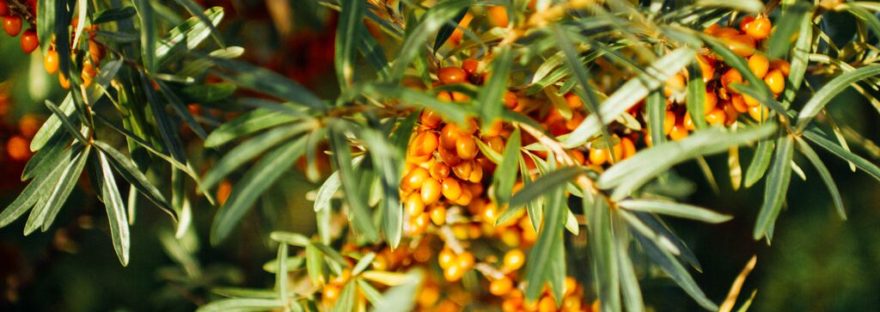It’s nearly May. Potentially there are 64 days before we start our first sea buckthorn harvest. This is the culmination of ten years work. Ten years of working with like minded others with the passion to deliver a natural crop that encapsulates a power pack of nutritional quality. I too have that passion, but it is not emotion that will deliver the crop.
In 2017 our orchard was laden with berries. The realisation that handpicking was so time-consuming led to abandoning the crop – but it inspired two years of investment in machinery. Designing and developing a harvesting system that reflected on the success of being able to grow a crop.
So here we are. Two months to go and the plants look really healthy. Mid-March was the crucial period for pollination. It will be three weeks before we start to see the berries forming and can assess the size of crop. The memories of the icy storm of March 2018 that rampaged through the plants destroying the viability of pollination are still vivid in our minds. But that is nature and this is another year.
This coming week the design team are testing the harvesting equipment which has been through a development phase of test and modification. Our Landini tractor gets its full service. The Ladurna cultivator – our weed control solution after years of manual strimming will be put to work. Applying foliar feeds has also been a manual job, but two weeks ago the backpack was replaced by a 400lt tractor mounted sprayer. Finally, our sea buckthorn can be managed to an effective and efficient plan.
As we mechanise our sea buckthorn it might be efficient but this comes at a time when Greta Thunberg is showing the leadership that we all must focus on reducing our impact on the environment. It is sad that it takes a 15 year old Swedish school pupil to remind us of the critical nature our environment is in. Mr Gove, at DEFRA has driven the government 25yr Environment plan, but as Greta has highlighted it is not a 25yr policy plan we need but action.
Yesterday, as I walked our dog I thought about the whole issue of sustainability. Plants growing in the wild need the rain, the sun and the soil to grow, thrive and return year after year. Such a simple but totally sustainable system. One of the reasons for growing sea buckthorn was its low need for resources. No sprays, compost to improve the soil that feeds it and a low requirement for water. Hand picking would have been an environmentally low cost way of harvesting. It is fine for foraging wild plants, but not a commercial crop.
Our harvesting system is largely based on needing electricity. It is easy to say that is more efficient than direct use of fossil fuels, but electricity still comes from gas power stations. As we develop our crop we need to not only be aware of how our actions impact on the wider environment, but take action to minimise those impacts. Whatever we do, we will use resources. The issue is questioning their use. Minimising their use. Compensating and mitigating for their use and ensuring that the process is true to its goal of ensuring we tread lightly in the environment that we need to work in.

